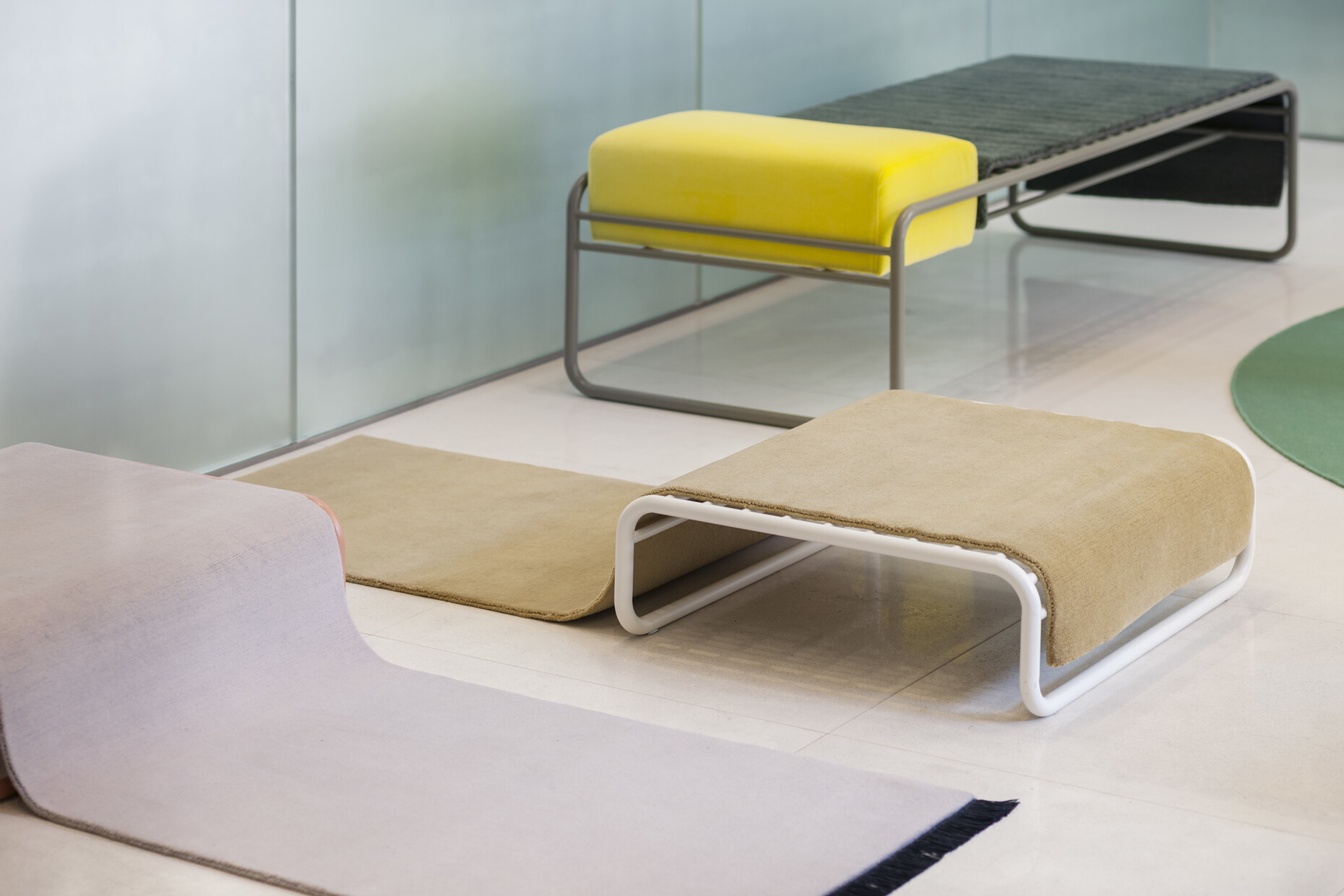SALONE DEL MOBILE 2018
Twill weaves and kilims
Kvadrat and Jonathan Olivares simply make a good fit – after all, both regularly step outside the boxes of their traditional area of work. The collaboration between the Danish textile manufacturer and the designer began in 2012 when the young talented designer featured in the exhibition to honor the fabric Hallingdal. Then, in 2015, the two joined forces again for a very special project: Olivares was asked by the Harvard School of Design to come up with furniture for Philip Johnson’s “Thesis House” in Cambridge, Massachusetts, which the architect designed for himself in 1942, and is today owned by the university. Jonathan Olivares created a daybed, and collaborated closely with Kvadrat on the cover fabric that was developed especially for it. More recently at Salone del Mobile Kvadrat presented the fabric series “Twill Weave”, the outcome of the Olivares-Johnson-project.
Jonathan Olivares is an exceptionally talented man – and it falls far short from doing him justice to simply call him a designer. After studying at the Pratt Institute in New York he spent a year working for Konstantin Grcic – whose approach to projects is similarly profound, complex and intellectual. The two men remain friends and colleagues to this day. The 37-year-old lives in Los Angeles, and works for clients like Knoll, Vitra and Nike. His better-known works include the “Aluminum Chair” for Knoll (2012) and the design of the Vitra Work Office in Weil am Rhein. His futurist installation “Outdoor Office” for the Art Institute of Chicago caused a real stir worldwide in industry circles. Work settings are Olivare’s pride and joy – and he collaborates with a network of creative professionals on the offices of large corporations throughout the United States.
In his work for Johnson’s “Thesis House” Olivares took as his starting point the building’s original structure and interior design. As the name suggests, Philip Johnson submitted the one-storey story pavilion as part of his graduation projects for a Masters of Architecture. It was his admiration for the works of Walter Gropius and in particular Ludwig Mies van der Rohe whom he met in Germany that led him to study architecture. And so it is hardly surprising that the most important furnishing items he installed in it included the daybed Mies van der Rohe designed for the German pavilion at the World Expo in Barcelona. However, unlike Mies van der Rohe, who used steel and concrete, because of the wartime shortage of building materials Johnson had to resort to wooden columns made by the local mast manufacturers for the support structure of his house. Olivares took the inspiration for his daybed from these masts, but in a clever and subtle move opted for carbon fiber instead, the material used today for sailboat masts, thereby forming a link between the past and present.
When it came to finding a suitable cover Olivares approached Kvadrat – and the new collection “Twill Weave” was born, whose diagonal texture also occurs in the design of the daybed. For the colors he worked with the Pigment Collection of the Straus Center for Conservation and Technical Studies at Harvard Art Museum, globally respected experts regarding pigments used in artworks over the ages. Minerals like alabaster, azurite or malachite come into play for the shades of “Twill Weave” – a total of 19 nuances in all, whose creation is arguably unique. It is not for nothing that his office is called JODR – Jonathan Olivares Design Research.
In Milan it was also possible to admire a further textile project by Olivares that he realized with Really, a partner of Kvadrat. A screen, whose design and structure cites the special material it is made from – namely panels of disused processed fabrics. The multipurpose furniture item is not only to remain a concept and design study; a technology firm in Los Angeles has already ordered 1000 room dividers. However, we are not likely to discover the client’s name until next year...
Katrin Greiling takes a different approach to pushing boundaries with her installation “Structures”in the Kinnasand showroom. The brand that joined the Kvadrat group in 2012 first began attracting attention with special installations last year. Isa Glink, Creative Director of Kinnasand, explains: “With Kinnasand LAB we have brokered a stimulating dialog with creative professionals worldwide. Together we are looking for new ways of how textiles can be perceived, which in turn results in highly sensual, fascinating and attractive products.”
The first cooperation with Studio Wieki Somers for Salone del Mobile 2017 marked the breathtaking start. “Shields”hung in the showroom: Rings and a trapeze featuring Kinnasand fabrics that moved like mobiles in the air currents. This year Katrin Greiling is putting the emphasis on Kinnasand rugs, which are now offered under the Kvadrat label. She placed the rugs in the showroom on benches and ottomans made of tubular steel. A thoroughly sensual experience: You immediately want to sit down on the benches and stroke the felted (“Harvest”) or New Zealand wool (“Kilim”). And the richly-colored furniture forms a highly diverse contrast to the rugs draped over them.

















